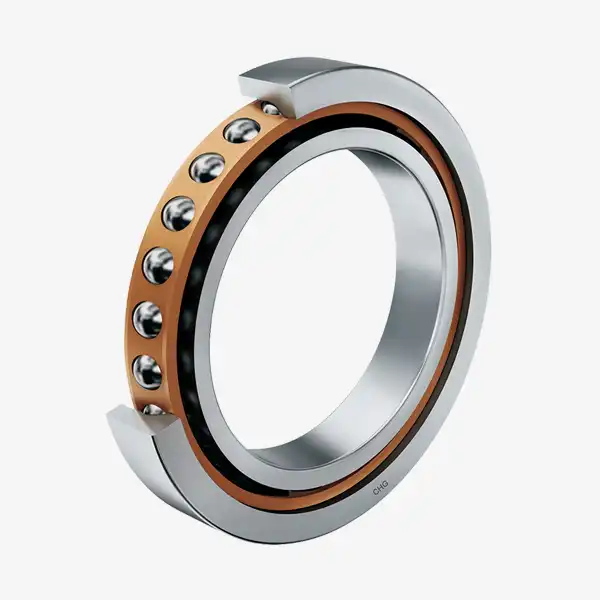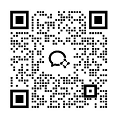Precision Angular Contact Ball Bearings: Key Insights
Precision angular contact ball bearings are specialized rolling element bearings designed to handle combined loads (both radial and axial) with exceptional accuracy. These bearings feature raceways displaced relative to each other in the direction of the bearing axis, creating a contact angle that enhances their ability to support axial loads. This design makes them essential in applications requiring high rotational precision, superior stiffness, and reliable performance under complex loading conditions. From machine tools and aerospace equipment to medical devices and robotics, these bearings ensure smooth operation and extended service life in demanding industrial environments.

What makes precision angular contact ball bearings different from other bearing types?
Unique Geometric Design and Load Handling Capabilities
Precision angular contact ball bearings stand apart through their distinctive geometric configuration. Their precisely engineered contact angle between balls and raceways, typically ranging from 15° to 40°, creates an optimal force distribution that enables Precision Angular Contact Ball Bearings to manage both radial and axial loads simultaneously. Unlike deep groove ball bearings that excel primarily at radial loads or thrust bearings designed for axial forces, precision angular contact ball bearings offer a versatile solution for complex, multidirectional loading scenarios. Their inner and outer ring raceways are displaced relative to each other in the bearing axis direction, creating the characteristic contact angle that defines their performance. These bearings feature higher precision manufacturing tolerances, with carefully controlled dimensional accuracy and surface finishes that outperform standard bearing options.
Superior Speed and Precision Performance Characteristics
Precision Angular Contact Ball Bearings offer exceptional rotational accuracy and high-speed capabilities that distinguish them from other bearing types. Manufactured to tighter tolerances, with precision classes often reaching P4, P2, or higher according to ISO standards, these bearings deliver minimal runout and superior rotational precision—critical in applications such as machine tool spindles and precision instruments. Precision Angular Contact Ball Bearings typically have limiting speeds 20-30% higher than comparable conventional bearings due to their optimized internal geometry and superior cage designs. Their preload capability represents another distinguishing feature; these bearings can be mounted with a predetermined internal load to eliminate clearance and increase stiffness. This preload capability, combined with their angular contact design, results in enhanced rotational accuracy and reduced vibration levels.

Material and Manufacturing Advancements Specific to Angular Contact Bearings
The superior performance of Precision Angular Contact Ball Bearings stems largely from advanced materials and specialized manufacturing processes. These bearings frequently utilize premium-grade bearing steels that undergo additional heat treatment processes to achieve optimal hardness, dimensional stability, and wear resistance. For demanding applications, hybrid designs with ceramic balls may reduce weight, increase stiffness, and provide superior insulation properties. The manufacturing process involves more steps and quality checkpoints than standard bearings, including specialized grinding operations that achieve nanometer-level surface finishes. Modern production leverages advanced techniques such as cryogenic treatment, super-finishing processes, and computer-controlled component matching. Additionally, these bearings often feature innovative cage designs made from sophisticated materials that outperform stamped metal cages found in conventional bearings.
How do you properly install and maintain precision angular contact ball bearings?
Critical Installation Procedures for Optimal Performance
Proper installation of Precision Angular Contact Ball Bearings requires meticulous attention to detail. The process begins with thorough inspection and cleaning of both the bearing and mounting surfaces, as even microscopic contaminants can compromise precision. Technicians must wear clean gloves to prevent contamination and use specialized tools designed to apply force only to the specific ring being mounted. Correct mounting orientation is paramount; these bearings must be installed with attention to their directional design, as indicated by manufacturer markings. Proper preload application represents one of the most critical considerations unique to Precision Angular Contact Ball Bearings. This predetermined internal load eliminates clearance and increases system stiffness but must be applied precisely according to application requirements. Proper shaft and housing fits require careful calculation based on load conditions, operating temperatures, and rotation patterns. For bearings arranged in matched sets, maintaining their factory pairing throughout installation is essential.

Lubrication Requirements and Maintenance Schedules
The performance of Precision Angular Contact Ball Bearings depends significantly on appropriate lubrication and maintenance. These precision components demand carefully selected lubricants with specific viscosity characteristics, additive packages, and temperature stability profiles. For high-speed applications, synthetic oils or greases with low friction coefficients and superior thermal stability are typically preferred. The lubrication method must be selected based on specific application requirements, operating speeds, and environmental conditions. Maintenance schedules must consider operating conditions, with regular monitoring of temperature, vibration signatures, and lubricant condition. Relubrication intervals for Precision Angular Contact Ball Bearings typically follow more conservative guidelines than standard bearings. Comprehensive maintenance programs should include periodic vibration analysis, thermal imaging, and lubricant analysis to prevent unexpected failures and extend service life.
Troubleshooting Common Issues and Failure Analysis
Effective troubleshooting of Precision Angular Contact Ball Bearings requires specialized knowledge and systematic diagnostic approaches. When these bearings exhibit abnormal behaviors such as increased noise, vibration, or temperature, technicians should employ a structured investigation process. Excessive noise often points to specific issues—high-pitched sounds typically indicate inadequate lubrication or contamination, while rhythmic noises suggest raceway damage or ball defects. Vibration analysis provides valuable insights, as different frequency signatures correspond to specific failure modes. Thermal irregularities represent another critical diagnostic indicator, with localized heating potentially signaling improper preload, misalignment, or lubrication failure. When bearings require removal for inspection, technicians must document their condition and preserve evidence of failure modes. Proper failure analysis should consider the complete operating context, including mounting configuration, loading conditions, speed profiles, contamination sources, and lubrication adequacy.
What are the key applications and selection criteria for precision angular contact ball bearings?
High-Speed Spindle and Machine Tool Applications
Precision Angular Contact Ball Bearings are indispensable in high-speed spindle and machine tool applications, directly impacting manufacturing precision and productivity. In modern CNC machining centers and grinding machines, these bearings support spindle shafts rotating at speeds exceeding 15,000 RPM while maintaining critical dimensional stability. The arrangement of these bearings—whether in back-to-back, face-to-face, or tandem configurations—influences the spindle's rigidity and ability to manage cutting forces. For ultra-high-speed applications, hybrid bearings incorporating ceramic balls offer advantages through reduced centrifugal forces and enhanced vibration characteristics. The superior rotational accuracy of these bearings ensures that cutting tools maintain precise paths during machining operations, improving surface finishes and dimensional tolerances in manufactured components.
Aerospace and Medical Industry Requirements
The aerospace and medical industries impose extraordinarily demanding performance requirements on bearing components. In aerospace applications—from aircraft engines to satellite mechanisms—these bearings must function reliably across extreme temperature ranges while maintaining precision under variable loading conditions. Precision Angular Contact Ball Bearings designed for aerospace typically feature specialty materials that provide superior corrosion resistance and temperature stability. Medical applications present different demands, with these bearings found in dental drills, surgical tools, and imaging equipment requiring exceptional cleanliness and quiet operation. Medical-grade bearings often utilize specialized lubricants that are sterilization-resistant and non-toxic. Both aerospace and medical applications frequently require bearings manufactured to ABEC 7 or ABEC 9 precision standards, with comprehensive material certification and specialized testing protocols.
Robotics and Automation System Considerations
In robotics and automation systems, Precision Angular Contact Ball Bearings address specialized demands in robot arms, automated assembly equipment, and positioning systems. These bearings must accommodate frequent directional changes and varying load profiles while maintaining positioning accuracy. Their compact design proves valuable in robotic joint assemblies, where space constraints require high load capacity within minimal dimensional envelopes. Engineers often specify these bearings in paired arrangements to increase moment capacity and stiffness at articulation points. Selection criteria focus heavily on stiffness characteristics, with preloaded bearings offering the zero-clearance operation essential for precise positioning tasks. Additionally, these bearings must demonstrate excellent shock load tolerance to withstand sudden accelerations common in robotic movement profiles.
Conclusion
Precision Angular Contact Ball Bearings represent an essential component in modern engineering, offering unparalleled performance through their unique design and capabilities. Their superior handling of combined loads, exceptional speed ratings, and remarkable precision make them irreplaceable in critical applications across numerous industries. Proper selection, installation, and maintenance ensure optimal performance and extended service life. As technology advances, these specialized bearings continue to evolve, enabling new possibilities in manufacturing, aerospace, medical technology, and automation.
Luoyang Huigong Bearing Technology Co., Ltd. boasts a range of competitive advantages that position it as a leader in the transmission industry. Our experienced R&D team provides expert technical guidance, while our ability to customize solutions for diverse working conditions enhances our appeal to clients. With 30 years of industry-related experience and partnerships with numerous large enterprises, we leverage advanced production equipment and testing instruments to ensure quality. Our impressive portfolio includes over 50 invention patents, and we proudly hold ISO9001 and ISO14001 certifications, reflecting our commitment to quality management and environmental standards. Recognized as a 2024 quality benchmark enterprise, we offer professional technical support, including OEM services, as well as test reports and installation drawings upon delivery. Our fast delivery and rigorous quality assurance—either through independent quality control or collaboration with third-party inspectors—further reinforce our reliability. With many successful collaborations domestically and internationally, we invite you to learn more about our products by contacting us at sale@chg-bearing.com or calling our hotline at +86-0379-65793878.
References
1. Harris, T. A. & Kotzalas, M. N. (2023). Essential Concepts of Bearing Technology. CRC Press, Boca Raton, FL.
2. Zaretsky, E. V. (2022). "Precision Angular Contact Ball Bearings: Design Considerations for Aerospace Applications." Journal of Tribology, 144(3), 031701.
3. Hamrock, B. J., Schmid, S. R., & Jacobson, B. O. (2021). Fundamentals of Machine Elements (4th ed.). Cambridge University Press.
4. SKF Group. (2023). Angular Contact Ball Bearings: Technical Manual and Application Guide. SKF Publications.
5. Matsumoto, K., & Chen, L. (2022). "Performance Analysis of Hybrid Ceramic Precision Angular Contact Ball Bearings Under High-Speed Conditions." Tribology International, 168, 107386.
6. Smith, J. D., & Gadelmawla, E. S. (2021). Precision Machine Design: Principles and Applications in Modern Manufacturing. Springer International Publishing.

